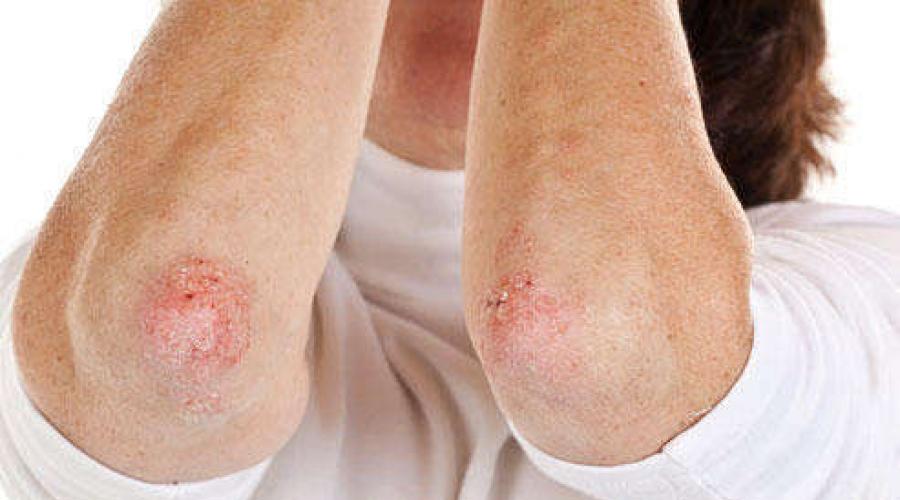Everything You Didn't Know About Itchy Dermatitis

Dermatitis is called any inflammatory skin lesion caused by external factors. This is one of the most aesthetically unpleasant diseases. Itchy dermatitis is one of them. This group includes diseases with severe itching and a chronic course.
Common causes of pruritic dermatitis include:
- stressful situations.
- Reaction to drugs.
- External impact - household chemicals, cosmetics.
- Neglect of personal hygiene rules.
- Permanent mechanical effect on the skin.
- Exposure to UV rays.
The development of dermatitis occurs in three stages:
- Acute dermatitis. Tiny blisters (microvesicles) appear on a certain area of the skin. When opened, these blisters form pinpoint abrasions with drops of fluid (serous exudate) that looks like dew. There is a weeping acute eczema.
- Subacute dermatitis. This stage occurs with insufficient treatment or its absence at all during exacerbation. The number of microvesicles is reduced, but peeling is formed on the area of the affected area. Some bubbles, without opening, dry out, forming crusts.
- Chronic pruritic dermatitis. The inflamed area of the skin thickens, and the pattern of the lesion intensifies (the process of lichenification). Redness takes on a rich color. The surface begins to peel off, the rash of bubbles, punctate abrasions, crusts are present, but their number is insignificant. Chronic dermatitis can occur in people of any age. At the same time, periods of an acute form are replaced by remissions, the duration of which depends on the characteristics of the organism and the observance of preventive measures.
The course of the disease is characterized by the simultaneous presence at the site of inflammation and weeping eczema, and crusts and peeling.

The lesions are of different sizes, their contours without sharp boundaries. Very often, dermatitis is not localized in one area, but spreads to others, symmetrical, sometimes covers the entire body, causing generalized itching when the whole body begins to itch. Dermatitis without itching is rare, since it is this sensation that occurs when rashes form.
Diagnostics
Dermatitis can be diagnosed in several ways.
- Clinical blood test.
- Microscopic examination and sowing of the elements of the affected area for pathogenic fungi to exclude mycotic infection.
- Allergen testing.
The evaluation of the results of these examinations should be carried out by a dermatologist or allergist. Therefore, if itching, redness, vesicles occur, you should consult a doctor as soon as possible to make an accurate diagnosis of the disease and prescribe urgent treatment. Otherwise, you can lose precious time in recognizing other diseases that have a similar clinical picture - erythroderma, toxidermia, in which emergency treatment measures must be applied.
Treatment
In the treatment of pruritic dermatitis, it is necessary to eliminate the irritating factor. External methods for eliminating symptoms depend on the nature of the rash and the severity of the process.
Symptoms of acute pruritic dermatitis with blisters and erosive skin lesions can be removed using dressings soaked in herbal decoctions or in an aqueous solution of boric acid (3 g of powder per 100 ml of water).

It is important to follow a certain technique when carrying out this procedure:
- Prepare a decoction of herbs according to the instructions, cool it to room temperature.
- Fold a gauze napkin in 6-8 layers, moisten in a decoction, wring out, apply to the area of inflammation for 15 minutes.
- Repeat the procedure for one and a half hours, with a further break for 3 hours.
- During the day, such overlays should be repeated 2-3 times.
The most suitable are herbs such as string, oak bark, chamomile, celandine.
A safe and quick way to eliminate the manifestations of itching dermatitis is the non-steroidal external drug Skin-cap, which is based on activated zinc pyrithione. The effect of its use is comparable to hormonal external agents, but there are no side effects when used. Another advantage of Skin cap is anti-inflammatory, antibacterial and antifungal action, which prevents the occurrence of a secondary infection. Extensive skin lesions with weeping eczema can be treated with a Skincap spray, and if the skin is very dry, then it is preferable to use a cream that will provide additional moisture.
Often, with dermatitis, a secondary infection joins. It can be identified by the characteristic yellowish crusts on the surface of the affected area and the cloudy content of the microvesicles. These blisters must be opened in order to subsequently dress them with antibacterial ointments (Levomikol or Synthomycin emulsion 10%) twice a day for 12 hours.
Treatment of itchy dermatitis is carried out with the use of desensitizing and antihistamine drugs (, Erius), which can reduce itching and redness.
The use of corticosteroid (hormonal) drugs should only be done under medical supervision. Their illiterate use can lead to atrophy of the skin. The imposition of hormonal agents on the face is prohibited.